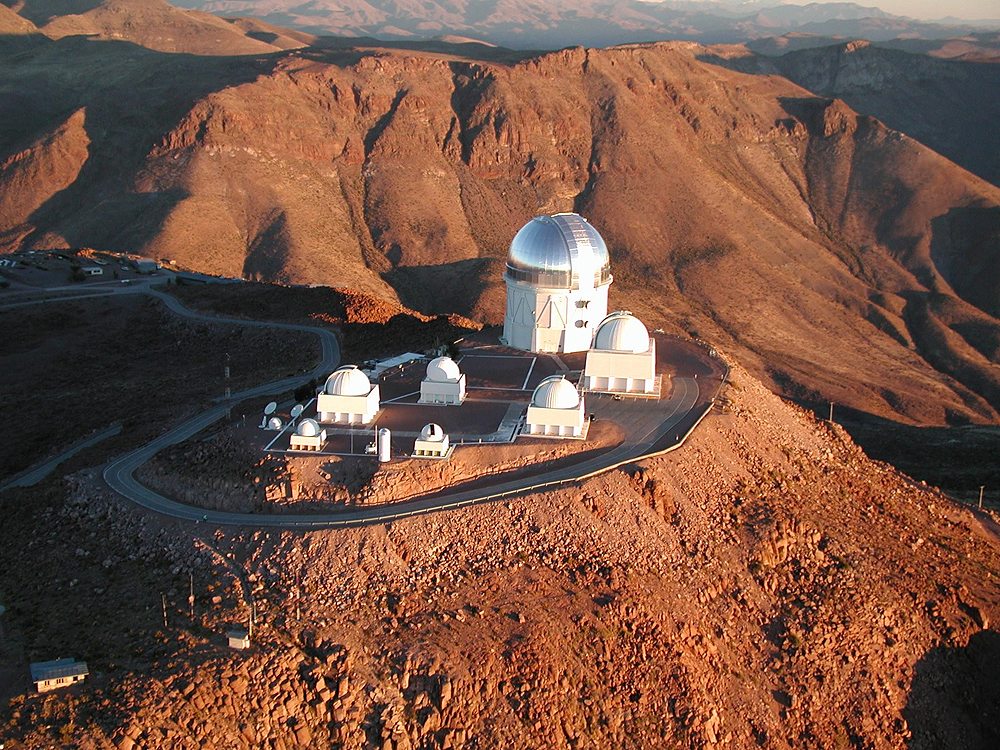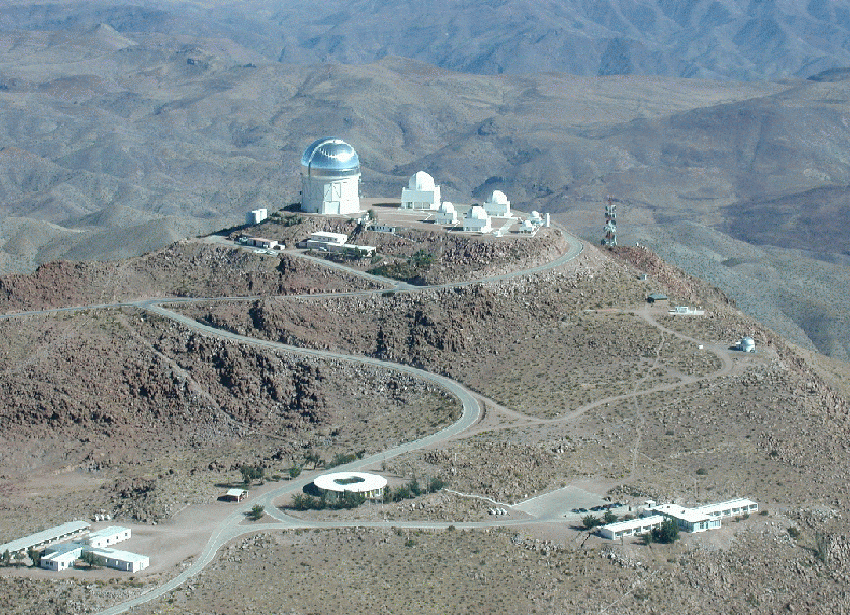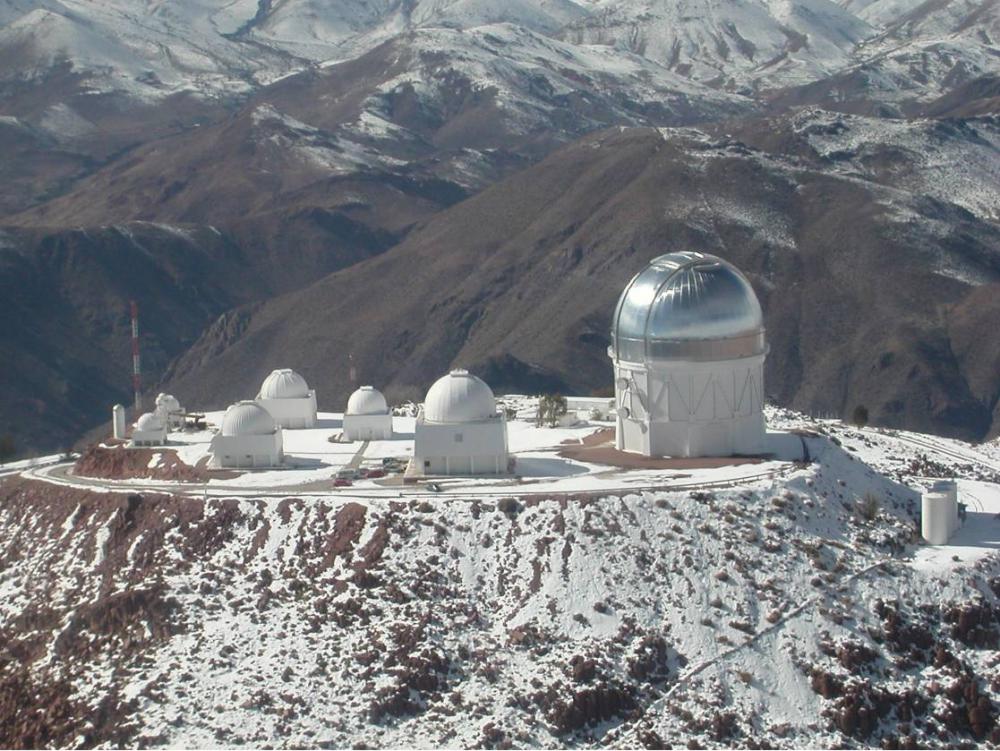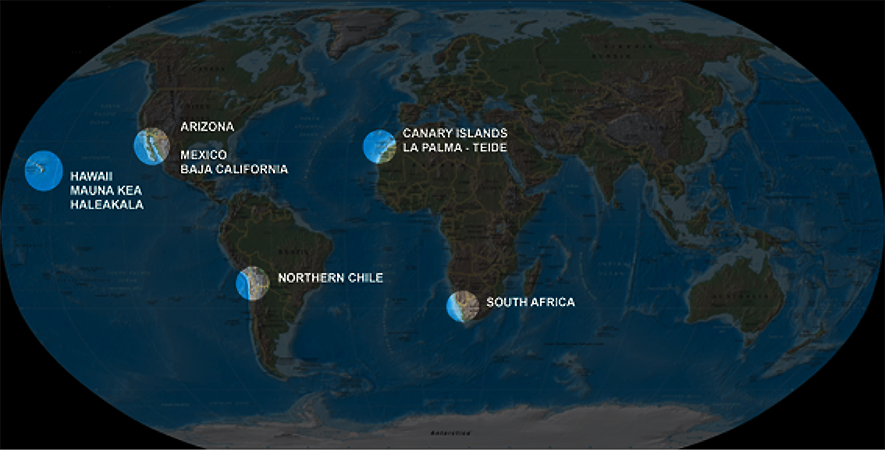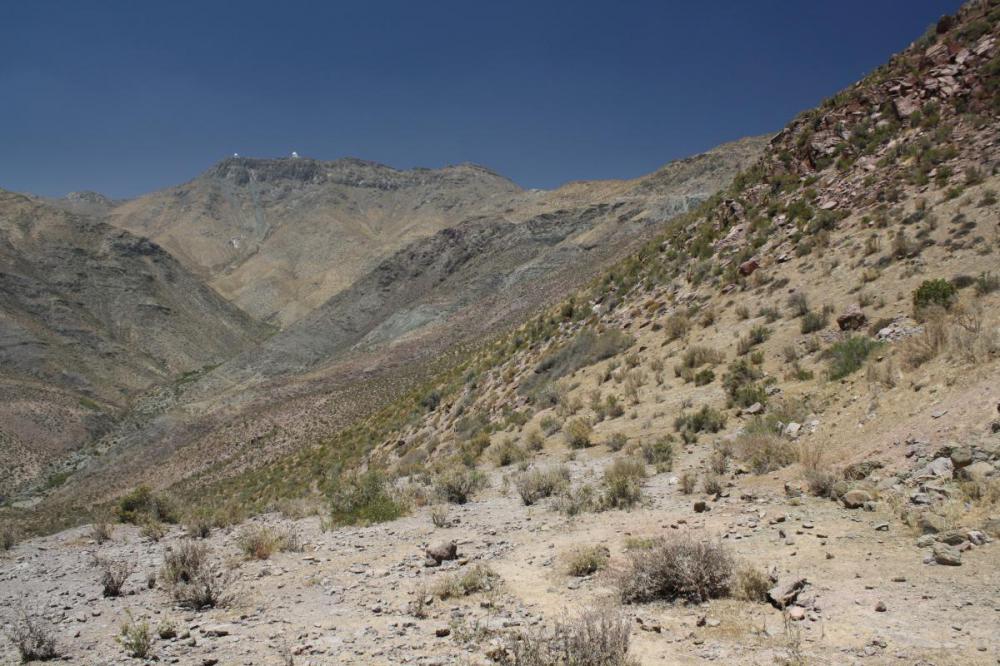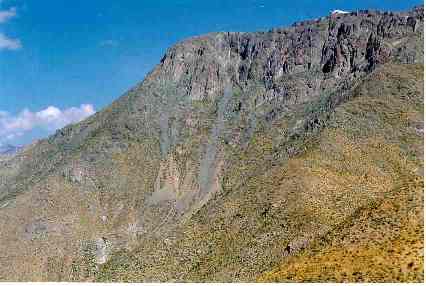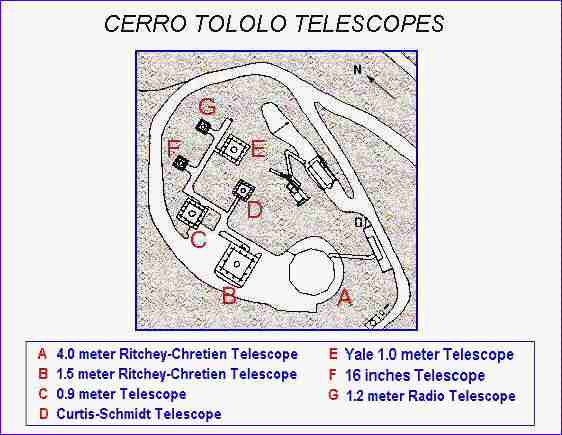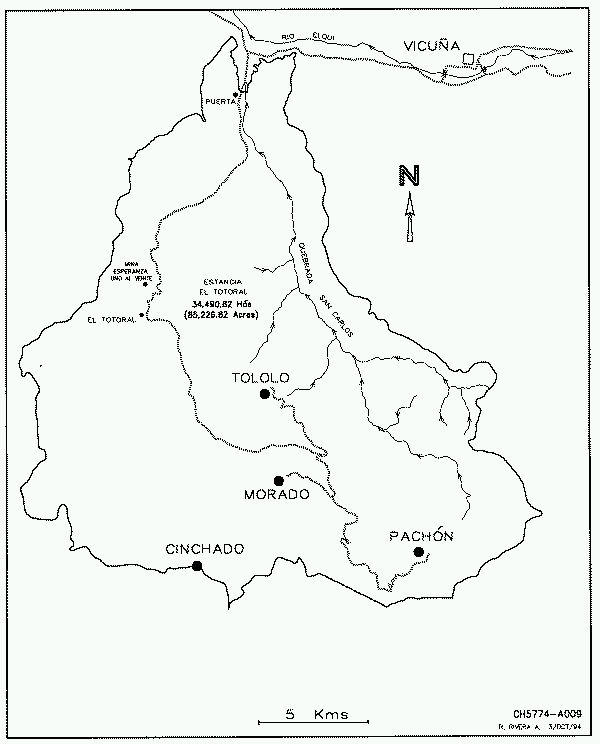
Category of Astronomical Heritage: cultural-natural mixed
AURA Observatory, Chile (multiple locations): General description

Presentation
Geographical position
Coquimbo Region, Chile
Location
- Cerro Tololo: Latitude 30° 10.2′ S, longitude 70° 48.4′ E. Elevation 2240m above mean sea level.
- Cerro Pachón: Latitude 30° 14.4′ S, longitude 70° 44.1′ E. Elevation 2700m above mean sea level.
General description
The AURA (Association of Universities for Research in Astronomy) Observatory in Chile comprises two mountain-top groups of telescopes: Cerro Tololo and Cerro Pachón. Cerro Tololo is the site of the first of the various major, international observatories that are now operating in Chile. Following this lead, and attracted by the pristine night skies, the world’s astronomers have made northern Chile the primary centre for major astronomy research observatories in the southern hemisphere. The wide-field, 4m, Blanco telescope was the largest optical telescope in the southern hemisphere during the period 1975-1997. Clear, dark skies over the Blanco telescope were crucial to its selection by the two groups who used it to make the initial discovery of the acceleration of the Universe.
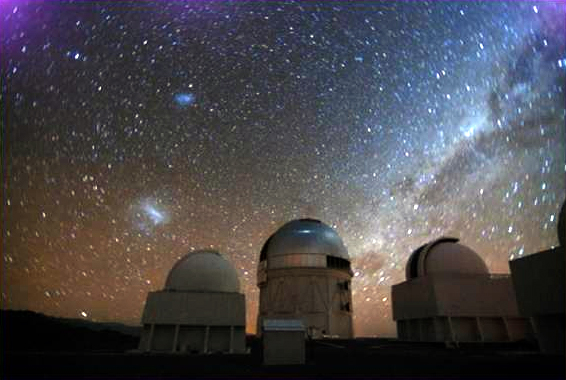
Brief inventory
Main telescopes: 4m Blanco; 8m Gemini South; 4.2m SOAR; and 8.2m Large Synoptic Survey Telescope (LSST) under development. There are also other, smaller telescopes. This site was recently selected for the LSST after an international, competitive survey. This telescope will provide deep images of the whole sky every 3-4 nights.
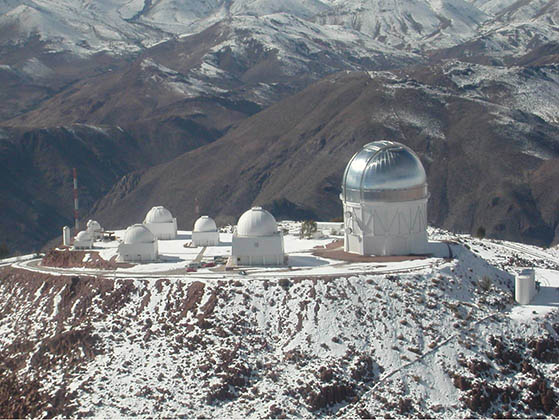
History
The observatory has been in operation on this site for nearly 50 years.
Cultural and symbolic dimension
The AURA Observatory in Chile forms a part, located in the southern hemisphere, of a single set of sites in the world with exceptional conditions for observing the Universe. These sites, including their natural and cultural components, are exceptional ‘windows of science and knowledge’.
Management and use
Present use
The observatory is the site of the telescopes listed above.
Regarding interpretation and outreach, the observatory has formed a 200+ schools network and support organization in collaboration with the Municipality of La Serena and the local University. The Coquimbo Region has an extensive astro-tourism development initiative. Seven public and private observatories have opened in the Region in response to the demand from networks of schools and from tourists.
State of conservation
The buildings and telescopes are well maintained, consistent with the operation of a major research facility.
A National Office for the Protection of the Quality of the Skies of Northern Chile (OPCC) has the mission to carry out public education and to assist the government in the protection of this natural heritage. Under supervision of the Superintendent’s Office of Electricity and Fuel (SEC) and local municipalities, about 2/3 of all street lights in the three, key, ‘astronomical’ Regions of Northern Chile have now been modified or replaced in order to comply with the requirements of the ‘norma luminica’. The broad-band, artificial sky background is, even in the worst directions, still within 10-15 degrees of the horizon, and does not yet interfere with any observatory operations.
Main threats or potential threats
The main threat is light pollution: this is the most threatened of the major observatory sites in Chile. The other significant threat is mining.
Protection
The zone around the site has been declared ‘of Scientific Interest’ by the Chilean Government, which protects it against incursion by mining interests. Any mining activity within this area, including prospection work, would require the written permission of the President of the Republic of Chile. The buffer zone is protected from mining operations via a formal program of constant monitoring of requests for mining activity.
The Region of Coquimbo is one of three Regions in northern Chile where artificial lighting is governed by the requirements of Supreme Decree 686/98 (the ‘norma luminica’, signed by the President of the Republic of Chile). This protects against light pollution.
On the property, AURA voluntarily complies with and exceeds all environmental protection requirements of the Chilean government.
Context and environment
‘Astrotourism’ has arisen because of the contrast between the polluted skies of Europe, Japan and the USA and the unparalleled, naked-eye view of the night sky over the Andes, the Pacific Ocean and the deserts of northern Chile. Recognizing this natural and cultural heritage, the motto of the Coquimbo Region of Chile is now ’Coquimbo—the Star Region‘.
Archaeological / historical / heritage research
The Diaguita and Molle cultures in the immediately surrounding area are extinct. There are two examples of rock art (not necessarily connected with astronomy) on Cerro Pachón. A statistical study of Molle sites might reveal further astronomically relevant information.
Management, interpretation and outreach
The entire 34,491ha (344.9km²) site is owned by AURA, the Association of Universities for Research in Astronomy. AURA is recognized by the Chilean Government as an accredited International Organization, with a variety of diplomatic privileges. The stakeholders are the 40 international member institutions of AURA Inc.
No multimedia content published
Currently there is no multimedia content published for this case study






